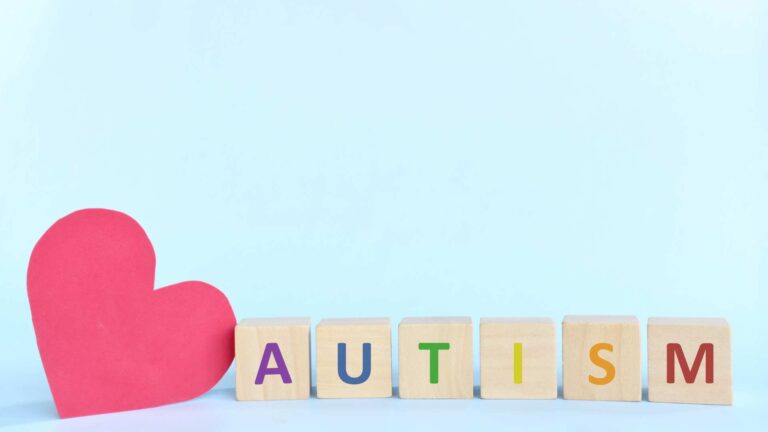Table of Contents
The 7 Dimensions of ABA, established in 1968 by Baer, Wolf, and Risley, are foundational to effective ABA therapy or applied behavior analysis programs. These dimensions outline and optimize the 7 core functions of ABA, which support ABA providers in enhancing treatment plans, sessions, and assessments to improve outcomes for every client they serve. They also help maintain the integrity of ABA for maximum efficiency.
The 7 Dimensions of applied behavior analysis are:
1. Applied
2. Behavioral
3. Analytic
4. Technological
5. Conceptually Systematic
6. Effective
7. Generality
These core elements of ABA are rooted in extensive research and focus on the function of behavior while promoting more helpful, functional actions in learners with autism spectrum disorder (ASD). However, the 7 Dimensions of ABA do more than enhance socially meaningful behaviors that directly improve the lives of ABA clients.
This blog by Texas ABA Centers will explore how the 7 Dimensions of ABA also provide systematic structure and encourage the valuable application of new skill sets in those with ASD. Over time, this helps improve their participation and support their communities. The 7 Dimensions of ABA also show families, loved ones, and educators measurable results that can offer them tremendous hope for the future of those with ASD receiving ABA care.
So, keep reading about these 7 foundational aspects of ABA and how they help make every session even more personal to the client, resulting in even better results.
Click here for more information about Texas ABA Centers and the ABA care we offer. Click here to read other thoughtful blogs on autism and ABA.
What Is ABA Therapy or Applied Behavior Analysis?
ABA learners work alongside skilled and highly experienced ABA professionals who hold licensure in applied behavior analysis by the BACB, including Registered Behavior Technicians (RBTs) and Board Certified Behavior Analysts (BCBAs).
These providers combine the 7 Dimensions of ABA to help clients achieve their target goals in manageable steps while collecting and assessing data. ABA interventions can support many aspects of life by targeting behaviors like tooth brushing, asking for help, or learning how to sit for circle time, to name a few.
In many cases, clients receiving ABA care are teenagers and young children with ASD who take their ABA learning into adulthood for more autonomy and success throughout life.
Understanding the 7 Dimensions Of ABA
Below, we will delve into each dimension more deeply to understand how they play a role in successful ABA therapy:
1. Generality
Think about your learning journey. How did you pick up skills like recognizing letters or taking turns? It could have been through watching educational shows or playing with your parents. Chances are, no one taught you how to write the line of every letter or how to color each page of a coloring book individually; instead, you were exposed to these skills and generalized them.
In ABA, generalization means mastering a skill, retaining it over time, and applying it across various settings with different individuals.
Examples of generalizing skills would be reciting your favorite superhero theme song in first grade and again in third grade. It might also be seeing the letters “G, and” O” on a sign and recognizing it grants access or move ahead without needing more instruction.
In the world of ABA, individuals receiving intervention face challenges when trying to apply the skills they’ve learned in new situations. For ABA therapy to be truly effective, it must be helpful to use its learning in general, not just in ABA sessions.
2. Effective
For a treatment to truly make a difference, it needs to hold practical importance not just for the learner but also for their family and friends. Behavior goals should be crafted with the client’s life experiences in mind, reflecting their family and community culture.
What proves effective for one ASD learner may not necessarily work for another. For instance, it may not be socially significant to focus on toilet training for a 12-month-old. However, teaching an 8-year-old this skill can be highly impactful and offer them a world of new opportunities. The social significance of mastering this skill at eight years old far outweighs its importance at 12 months.
3. Technological
Replication plays a vital role in behavior analysis. A significant foundation of ABA lies in its consistent replication among different individuals over decades. Crafting treatment with a “technological” approach means outlining treatment steps in a way that is accessible for anyone to implement seamlessly.
4. Applied
Treatment should be socially significant to ensure it aligns with the “applied” dimension of applied behavior analysis. For example, teaching an adult how to crawl may not be as socially substantial as teaching them to walk safely or look both ways before crossing a street.
In an effective ABA treatment plan, providers target goals that are crucial to the individual’s success throughout their personal life. ABA plans should focus on developing skills that enable the learner to thrive within their community and surroundings. Furthermore, ABA should always bring lasting, impactful improvements.
5. Conceptually Systematic
Embracing a conceptually systematic approach in ABA entails grounding a program in the fundamental principles of behavior analysis. For instance, it ensures that every ABA intervention incorporates reinforcement as a cornerstone to ABA progress.
Other examples of a conceptual system in ABA include:
- Employing functional assessments
- Utilizing evidence-based interventions
- Maintaining consistency throughout ABA programming
- Ongoing training and supervision for ABA practitioners
- Continuously updating interventions based on new research and evidence
By being conceptually systematic, ABA programs can ensure that their interventions have a solid evidence basis for effectiveness.
6. Analytic
Clinicians consistently analyze data to determine the relationship between environmental changes and behavior. For instance, when a clinician introduces a new ABA program to reduce a challenging behavior by reinforcing positive behaviors, the data must demonstrate that it’s making a difference. Through assessment, ABA providers can evaluate the changes to the maladaptive behavior over time to determine what’s working and what isn’t.
If a reduction in behavior is observable, can be evaluated, and can be replicated, the provider can conclude the new procedure contributed to this positive change.
7. Behavioral
In applied behavior analysis, observable and measurable behaviors can be shaped and modified through ABA principles. By focusing on visually observable behaviors, ABA providers can assess the individual’s actions within their surroundings.
However, it’s crucial to understand that “behavior” encompasses all actions, not just ones that can be hindering or limiting to the learner. Behavior includes every action we engage in.
Why Are These 7 Dimensions of Applied Behavior Analysis Vital?
These 7 Dimensions of ABA play a vital role in maintaining the effectiveness of every ABA treatment plan, making them essential for providers to employ and comprehend.
When choosing an ABA treatment program, do your best to ask providers how they include the 7 Dimensions of ABA in their sessions. And remember to seek guidance on seamlessly integrating these dimensions into your loved one’s everyday routines to increase their impact every day.
Happy ABA learning!
How Texas ABA Centers Can Support You?
At Texas ABA Centers, we value the collaboration of ASD families and their loved ones. Our extraordinary ABA team designs ABA therapy programs to ensure that every client’s unique goals, passions, and dreams are understood and reflected. We deliver top-notch ABA therapy and autism diagnostic services to you and your loved one across areas of Texas, including regions like Dallas, Austin, and Katy.
Contact us at Texas ABA Centers to schedule a complimentary consultation. You can reach us via this online link or at (877) 771-5725.
ABA can make each day a little brighter with a bit of science, play, and compassion!








